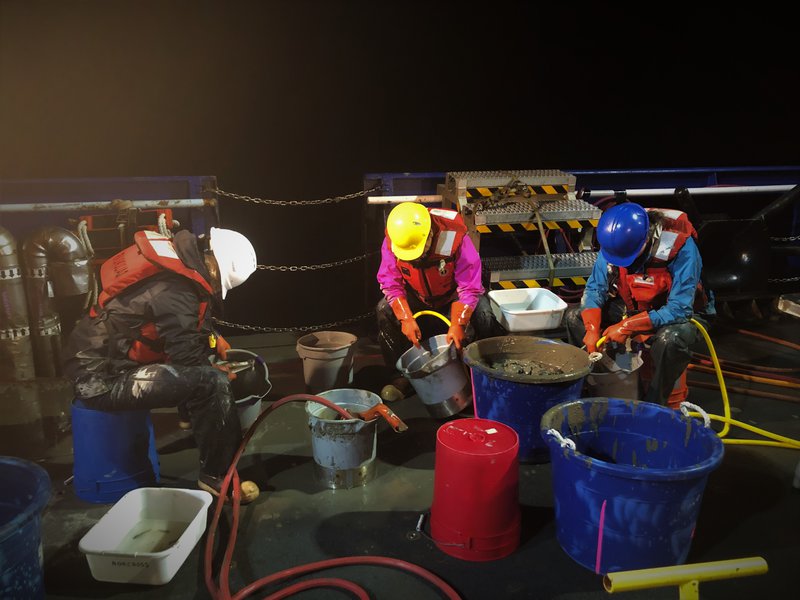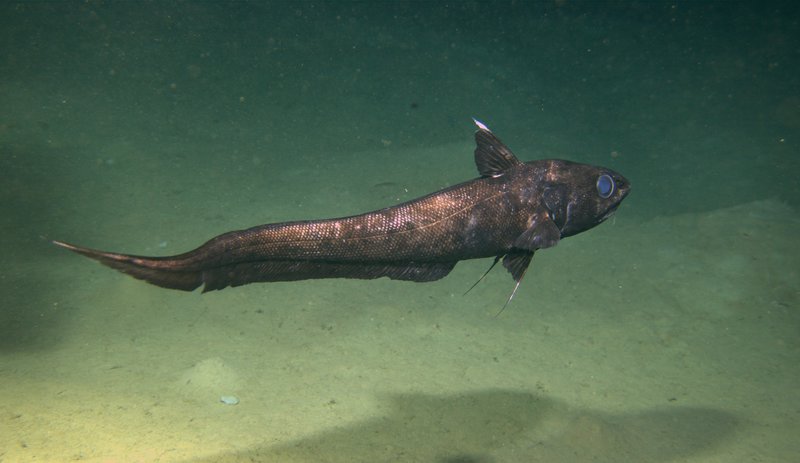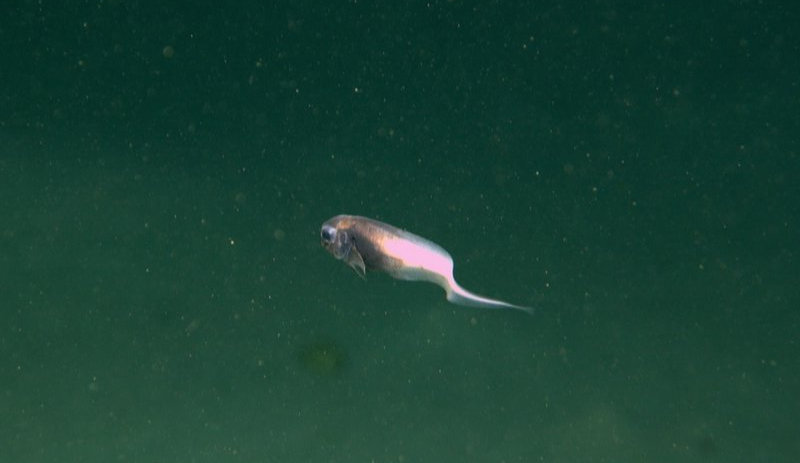
By Kelly Walker, Research Technician - University of Alaska Fairbanks
July 24, 2019
When I was asked if I wanted to join on another remotely operated vehicle (ROV) cruise, I jumped on the chance. The NOAA Office of Ocean Exploration and Research-funded expedition to the Arctic Chukchi Borderlands in 2016 was such an amazing experience. It was my first time working with an ROV and the first time I had ever fished a beam trawl at 2,000 meters (6,562 feet). I am a fisheries biologist and work with the fish trawl, but have previously mostly worked in shallower shelf environments. I was able to see what benthic invertebrates and fishes look like in their natural habitat before they are brought up to the surface. It was truly breathtaking.

Kelly Walker (left) and her team members are busy rinsing the catch from the beam trawl during night time trawling. Image courtesy of Katrin Iken, University of Alaska Fairbanks. Download larger version (jpg, 3.9 MB).
This cruise will be my first time fishing a net to 2,400 meters (7,784 feet). And as I write this, my stomach gurgles in anticipation. The net is on its way up right now. I’m not sure what to expect. I’m hoping to see a Pacific Grenadier or more of those unique-looking snail fishes we saw during the ROV dive earlier today. Or maybe we’ll get a bunch of brittle stars and some anemones. That’s the thrill of it – not knowing what you will bring up in the net. Earlier this cruise, we must have caught a giant boulder or snagged some sort of rock formation because it came up with the entire belly of the net ripped wide open. However, we still caught something! There were still five to six different species of brittle stars, an urchin, and some pycnogonids (sea spiders) somehow snagged in the sad-looking cod end of the net.

A Pacific Grenadier fish was a frequent visitor of the ROV at 2,500 meters (8,202 feet) depth. Image courtesy of NOAA/UAF/Oceaneering. Download larger version (jpg, 3.6 MB).

A deepwater snail fish imaged by the ROV. Image courtesy of NOAA/UAF/Oceaneering. Download larger version (jpg, 284 KB).
I’m especially excited to see what fish species are present on the seamounts. I think the benthic ROV dive on them will be even more exciting to see than the first dive. All my field work has been in the Arctic, making my knowledge of Arctic marine fish species a bit out of place in the Gulf of Alaska. I’m taking bits of free time to study up on what species might be present on the seamounts in the Gulf. So far it seems like rockfish species favor them, so I’m hoping to see some brightly colored fishes of the Sebastes genus. Or perhaps a Sablefish! I will definitely be writing a follow-up post about the first seamount dive, so stay tuned!!